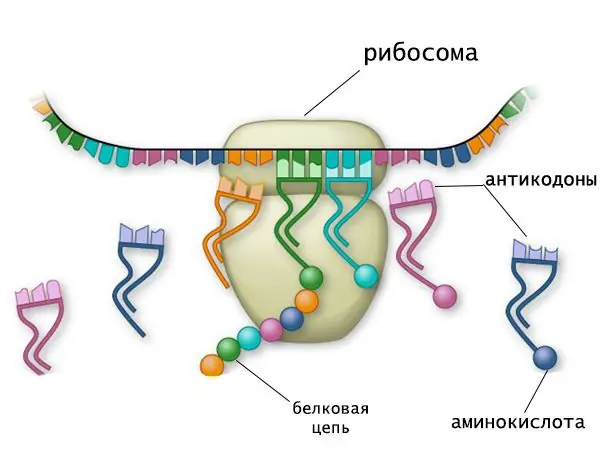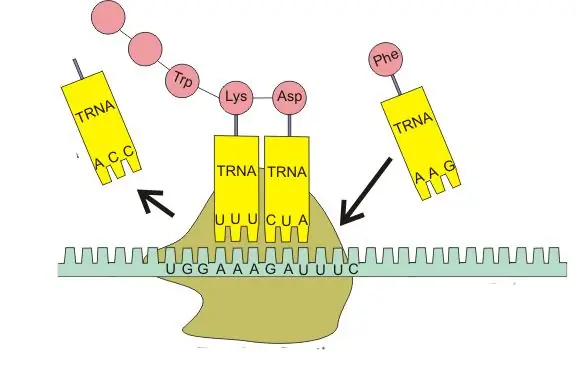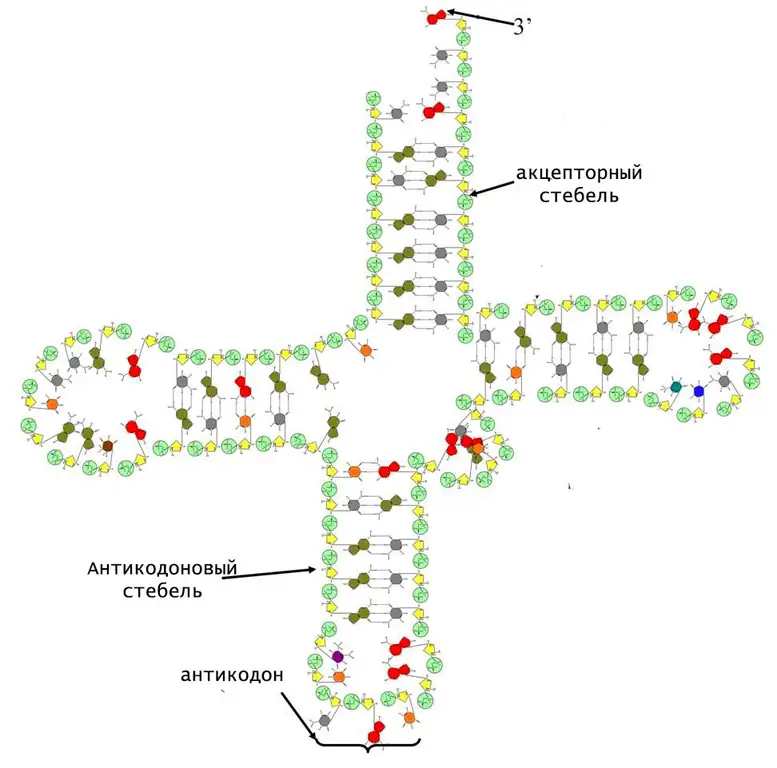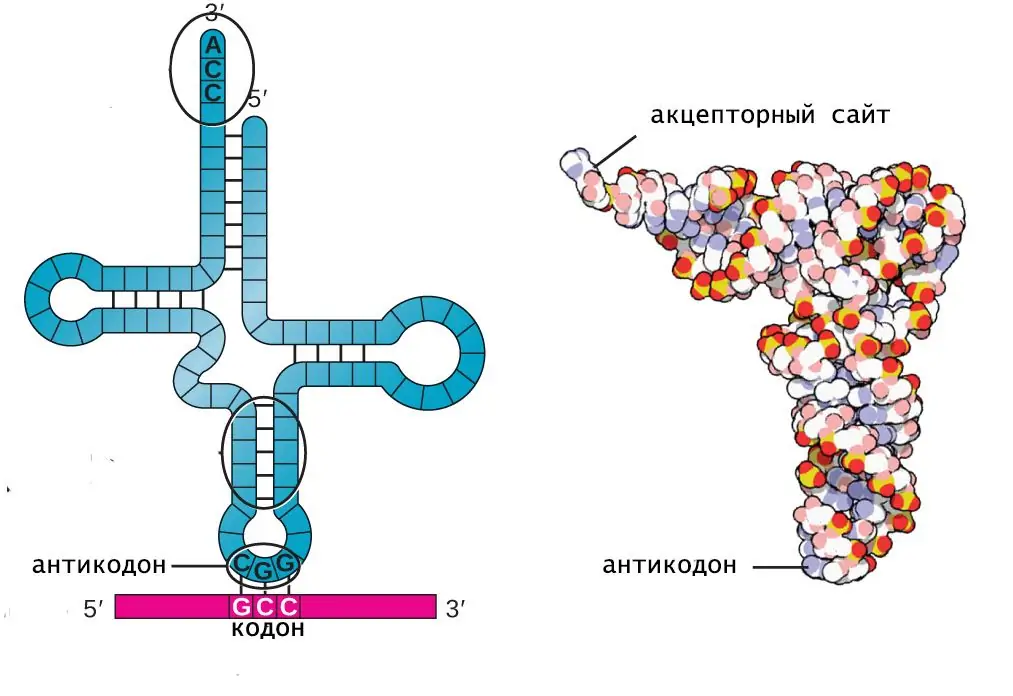The second step in the implementation of genetic information is the synthesis of a protein molecule based on messenger RNA (translation). However, unlike transcription, a nucleotide sequence cannot be translated into an amino acid directly, since these compounds have a different chemical nature. Therefore, translation requires an intermediary in the form of transfer RNA (tRNA), whose function is to translate the genetic code into the "language" of amino acids.
General characteristics of transfer RNA
Transport RNAs or tRNAs are small molecules that deliver amino acids to the site of protein synthesis (into ribosomes). The amount of this type of ribonucleic acid in the cell is approximately 10% of the total RNA pool.

Like other varieties of ribonucleic acids, tRNA consists of a chain of ribonucleoside triphosphates. Lengththe nucleotide sequence has 70-90 links, and about 10% of the composition of the molecule falls on minor components.
Due to the fact that each amino acid has its own carrier in the form of tRNA, the cell synthesizes a large number of varieties of this molecule. Depending on the type of living organism, this indicator varies from 80 to 100.
Functions of tRNA
Transfer RNA is the supplier of the substrate for protein synthesis that occurs in ribosomes. Due to the unique ability to bind both to amino acids and to the template sequence, tRNA acts as a semantic adapter in the transfer of genetic information from the form of RNA to the form of a protein. The interaction of such an intermediary with a coding matrix, as in transcription, is based on the principle of complementarity of nitrogenous bases.
The main function of tRNA is to accept amino acid units and transport them to the apparatus of protein synthesis. Behind this technical process is a huge biological meaning - the implementation of the genetic code. The implementation of this process is based on the following features:
- all amino acids are encoded by triplets of nucleotides;
- for each triplet (or codon) there is an anticodon that is part of the tRNA;
- each tRNA can only bind to a specific amino acid.

Thus, the amino acid sequence of a protein is determined by which tRNAs and in what order will complementarily interact with messenger RNA in the processbroadcasts. This is possible due to the presence of functional centers in the transfer RNA, one of which is responsible for the selective attachment of an amino acid, and the other for binding to a codon. Therefore, the functions and structure of tRNA are closely interrelated.
Structure of transfer RNA
TRNA is unique in that its molecular structure is not linear. It includes helical double-stranded sections, which are called stems, and 3 single-stranded loops. In shape, this conformation resembles a clover leaf.
The following stems are distinguished in the tRNA structure:
- acceptor;
- anticodon;
- dihydrouridyl;
- pseudouridyl;
- additional.
Double helix stems contain 5 to 7 Watson-Crickson pairs. At the end of the acceptor stem is a small chain of unpaired nucleotides, the 3-hydroxyl of which is the site of attachment of the corresponding amino acid molecule.

The structural region for connection with mRNA is one of the tRNA loops. It contains an anticodon complementary to the sense triplet in messenger RNA. It is the anticodon and the accepting end that provide the adapter function of tRNA.
Tertiary structure of a molecule
"Cloverleaf" is a secondary structure of tRNA, however, due to folding, the molecule acquires an L-shaped conformation, which is held together by additional hydrogen bonds.
L-form is the tertiary structure of tRNA and consists of two practicallyperpendicular A-RNA helices having a length of 7 nm and a thickness of 2 nm. This form of the molecule has only 2 ends, one of which has an anticodon, and the other has an acceptor center.

Features of tRNA binding to amino acid
Activation of amino acids (their attachment to transfer RNA) is carried out by aminoacyl-tRNA synthetase. This enzyme simultaneously performs 2 important functions:
- catalyses the formation of a covalent bond between the 3`-hydroxyl group of the acceptor stem and the amino acid;
- provides the principle of selective matching.
Each of the 20 amino acids has its own aminoacyl-tRNA synthetase. It can only interact with the appropriate type of transport molecule. This means that the anticodon of the latter must be complementary to the triplet encoding this particular amino acid. For example, leucine synthetase will only bind to the tRNA intended for leucine.
There are three nucleotide-binding pockets in the aminoacyl-tRNA synthetase molecule, the conformation and charge of which are complementary to the nucleotides of the corresponding anticodon in tRNA. Thus, the enzyme determines the desired transport molecule. Much less often, the nucleotide sequence of the acceptor stem serves as a recognition fragment.






